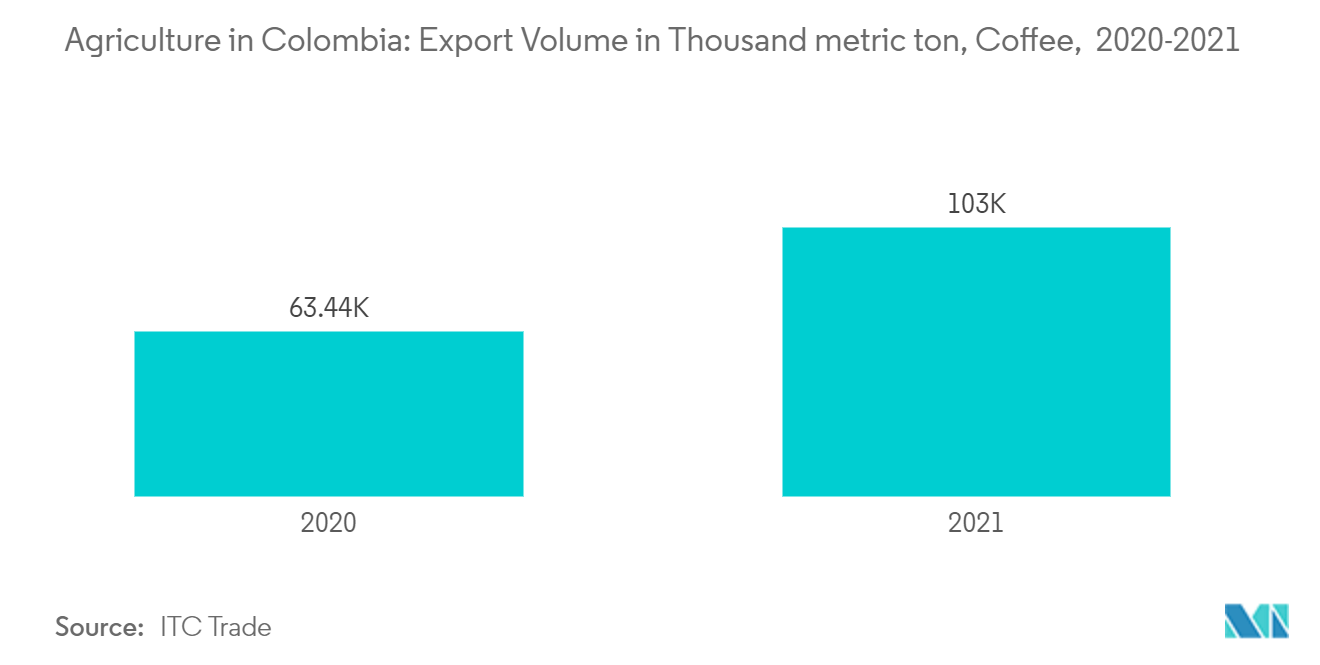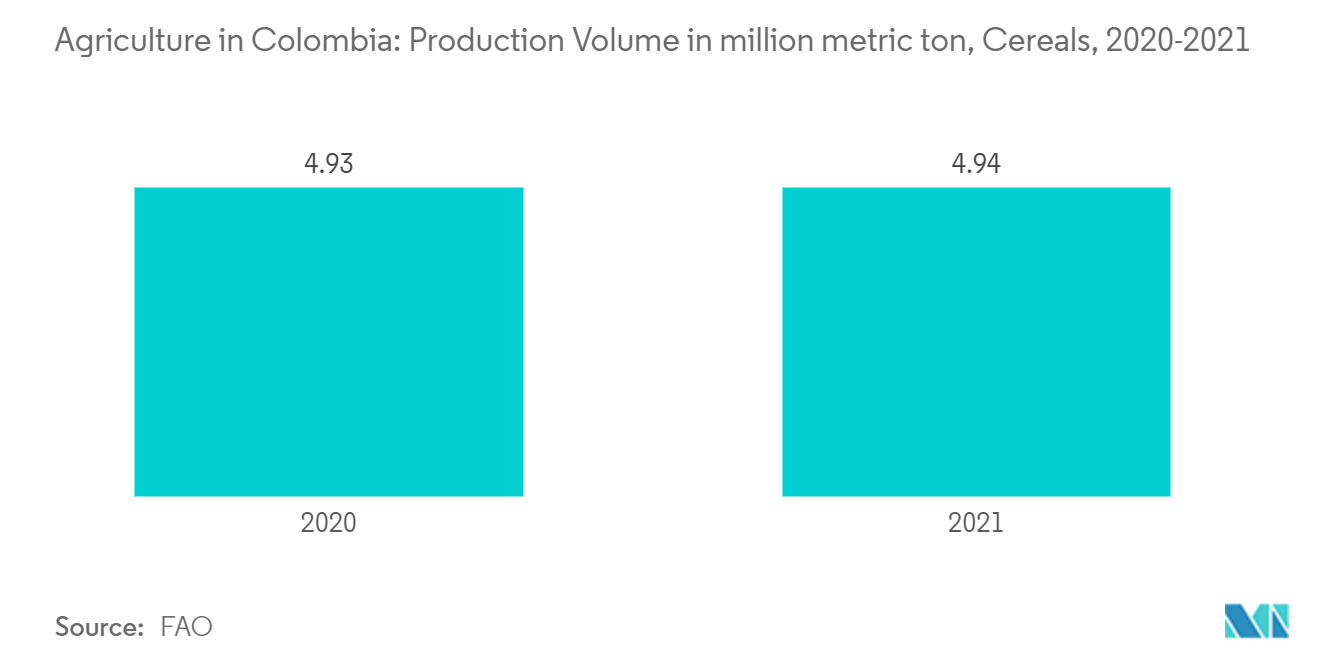Market Trends of Agriculture in Colombia
High Growth Potential for Agricultural Exports
Coffee and banana crops play an essential role in the agricultural economy of Colombia. In general, the tropical climate and the variety of altitudes of Colombia favor a wide variety of agriculture. Exporting raw materials and importing intermediate and capital goods historically dominated Colombia's trade. According to the United States Department of Agriculture (USDA), Colombia had exports valued at USD 3.3 billion in 2021.
Similarly, according to FAO, banana exports from Colombia, the fourth leading supplier of bananas in the LAC region, stood at 2.1 million tonnes, following a growth of 3.4% in 2021. Data on exports by destination disseminated by the Colombia National Customs Office for 2021 show significant year-on-year expansions in shipments of bananas from Colombia to the United States, Germany, Poland, and France. This export scope leads to better crop production, further driving the Colombian agriculture market.
Colombia is the third-largest coffee producer in the world, behind Brazil and Vietnam. Colombia's wide availability of certified coffee allowed green coffee exporters to access markets and segments internationally. It also enabled Colombian roasters to source certified raw materials. Around 86% of Colombia's coffee is exported as green coffee, while the remaining amount is processed (i.e., roasted, instant coffee, extracts) and consumed locally. Therefore, the growth potential of export-oriented crops contributes to the market's growth in the coming years.

Increasing Demand for Food Grains
Cereals are effective supplements consumed with the staple food across the world. An increase in population leads to higher demand for staple food, and cereals and pulses have been consumed at a higher rate over the years. Due to the demand, production is also increasing every year. The cereals and pulses production volume were 5 million metric tons in 2021.
Additionally, 95% of corn imports are destined for animal feed, with the remaining 5% for human consumption. Further, corn represents nearly 60% of the animal feed formulation in the country, and high-cost inputs can restrict the production levels of animal proteins. However, assuming normal weather conditions, Colombian corn production in 2021-22 is expected to remain unchanged at 1.5 million tonnes, according to a report from the Foreign Agricultural Service of the US Department of Agriculture (USDA).
Poultry and livestock sectors started to recuperate their pre-pandemic growth trend driven by recovered animal protein demand from households. They resumed operations in several economic sectors, including the food service and institutional sectors. Therefore, Colombian corn production is steadily growing as weather conditions are expected to be favorable for crop development. For instance, according to OECD, the production volume of corn in Colombia in 2021 accounted for 1.59 million metric tons, an increase compared to the previous year, which accounted for 1.47 million metric tons. Thus, with the expanding production of cereal, the market is expected to grow further during the forecast period.

